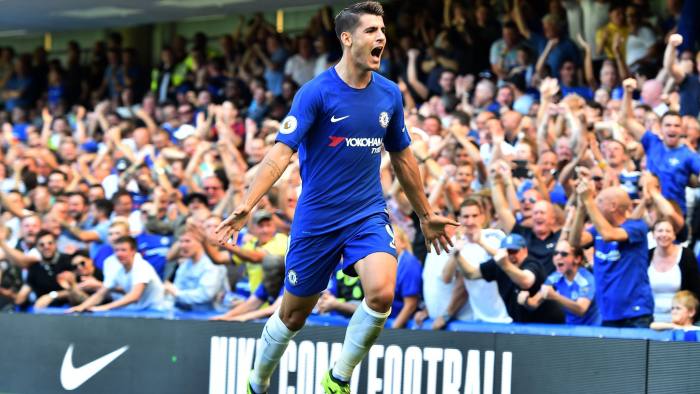Chelsea targets doubling of revenues in 10 years
English Premier League champions plan to step up sponsorship deals

Chelsea Football Club plans to ramp up sponsorship deals in an effort to double revenues to more than £650m, as it looks to keep pace with higher-earning rivals in signing the world’s best footballers.
Chris Townsend, commercial director, said that “over the next seven to 10 years” the English Premier League champions wanted “to be a top four or five club in Europe [by revenues], rather than ranked eighth”.
According to consultants Deloitte, Chelsea earned £334.6m in the 2015-16 season, including £163.1m from commercial deals, such as sponsorship. By contrast, Manchester United, the world’s highest-earning club, earned revenues of £515.3m, including £272.1m from commercial deals.
In his first interview since being appointed earlier this year, Mr Townsend said the London club planned to increase its number of sponsors from 12 to between 30 and 35.
“Manchester United, Manchester City and others have anywhere between 50 and 70 [sponsors],” said Mr Townsend. “We plan to focus on more premium brands in a far more limited range of categories.”
Nigel Currie, founder of sports consultancy NC Partnership, described Chelsea’s aims as “very ambitious”, adding: “[W]hen you have Manchester United, Bayern Munich, Real Madrid — clubs that have had success at the top of Europe at 30-50 years, those clubs have a head start. But if [Chelsea] continue to be successful on the pitch, then it is achievable.”
The club already has some of the top-grossing commercial deals in the Premier League. Last year, it signed a 15-year kitwear deal with Nike worth £900m. Japan’s Yokohama tyres pays £50m a year as Chelsea’s main shirt sponsor and Thai energy drinks maker Carabao pays £10m a year to sponsor the club’s training gear.
After being acquired by Roman Abramovich in 2003, Chelsea benefited from the largesse of its Russian billionaire owner, whose big spending on players helped to transform the club into one of the most successful English teams over the past decade.
Since 2011, following the implementation of so-called financial fair play rules that limit how much teams can spend on players as a proportion of income, Chelsea has struggled to compete for players against higher-earning clubs such as Manchester United, FC Barcelona and Real Madrid.
Chelsea manager Antonio Conte labelled the recent record spending on players as “crazy”, with reports suggesting he missed out on a number of preferred signings during the summer transfer window.
Mr Townsend added that “by creating additional revenues for Chelsea, it allows one to invest more in players”.
Chelsea has obtained planning permission to build a new £500m stadium at its Stamford Bridge ground. Having increased capacity by 18,500, including more than doubling the amount of hospitality seats available to 11,000, the club aims to increase annual match-day revenues to more than £100m, up from roughly £70m.
Mr Townsend said the new stadium could also help drive new deals, such as tying shirt sponsorship with naming rights for the ground, or creating partnerships with technology and telecoms companies to build stadium infrastructure alongside sponsoring the club.
It remains unclear how the stadium project will be funded. People close to the plans suggest Mr Abramovich, possibly alongside other investors, could cover the cost without the need to tap the club’s finances.
Copyright The Financial Times Limited 2017. All rights reserved.

